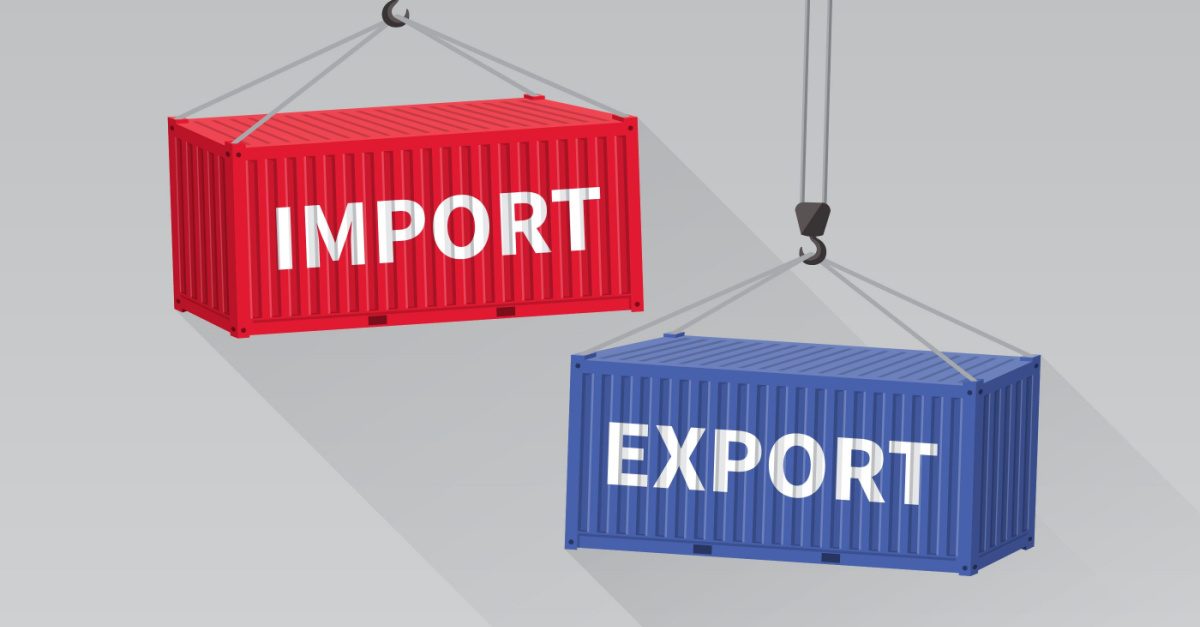
Beyond Borders: 7 Key Logistics Strategies for Seamless Import and Export
Beyond Borders: 7 Key Logistics Strategies for Seamless Import and Export; I believe ‘Logistics and Supply Chain Management (SCM)’ is an evergreen industry in the world. Neither Covid-19 nor AI revolution could outplay the industry. That’s the power of logistics and SCM. Logistics is nothing more than importing and exporting goods across the world or a small territory. However, this can be a complex and challenging process if not executed with proper plans and strategies. Strategies are a framework that keeps operating plans on track, ensuring a planned goal is achieved.
They directly address the stakeholder’s concerns and expectations. A recent survey conducted by Harvard Business Review clearly shows that an estimated 67% of business strategies fail, due to poor execution. Therefore, effective strategies are vital to any industry, particularly for logistics. Simultaneously the execution part also should go hand in hand. Come let’s check out the factors and goals involved in drawing these strategies as well as the benefits gained from the same.
Factors to Consider when Preparing Logistics Strategies
As the global economy is volatile these days, logistics companies increasingly rely on international trade to keep their business safer. There are several factors to consider here, including:
- The cost of transportation
- The time it takes to ship goods
- The risks associated with shipping goods
- The documentation required to import and export goods
- The type of goods being imported or exported
- The value of the goods
- The destination market
- The regulatory environment
Benefits We can Enjoy having Effective Logistics Strategies
Sound strategies bring solid benefits… Do you agree?
I always believe if your strategies are well-thought-out, they benefit your business by:
- Reducing costs
- Improving efficiency
- Increasing customer satisfaction
3 Major Aspects of A Logistics Strategy
The three major aspects of a logistics strategy are Long-term goals, Means, and Processes.
Long-term goals
There are three long-term goals involved in logistics strategy. They are customer satisfaction, the company’s competitive advantage, and supply chain management.
Means
Means are the opportunities available for us to achieve the long-term goals mentioned above. They are nothing but delivering value and good customer service.
Process
It is the last stage where the actual execution happens. This also includes anticipating and managing change and relating each element of the logistics strategy to the company’s overarching business objectives.
The Strategies.
Logistics Strategies for Seamless Import and Export
Though there are many strategies, let’s look at some of the 7 key logistics ones that businesses can use to ensure a seamless import and export process:
Cutting-edge Automation:
We all know business operations have undergone a significant transformation with the advent of technology, and this transformation has been further accelerated by the pandemic.
A recent study by Google-KPMG reveals that small and medium enterprises (SMEs) equipped with digital capabilities are expected to experience revenue growth at a rate approximately twice as fast as their offline counterparts.
To keep pace with this digital revolution, logistics companies must allocate resources towards automating their processes through robotic process automation, artificial intelligence (AI), and machine learning (ML).
Analyses, Forecast, and Optimisation:
Analysing, forecasting, and optimising are essential for effective inventory management. By analysing consumer data and accurately predicting demand, businesses can improve their planning processes for raw materials and finished products, while also avoiding stock-outs and overstocking.
For many logistics companies, repeat business is a significant part of their operations. Typically, exporters establish relationships with buyers in specific countries, leading to recurring orders.
Implementing software for demand forecasting and inventory management can positively impact the entire supply chain ecosystem. Digital freight forwarders have successfully incorporated technology that provides visibility and AI-enabled forecasting.
With each country’s focus on digitisation, importers and exporters should take advantage of digital freight forwarding services, which offer multiple benefits.
Unified Buying Process:
Establishing an adaptive unified buying process holds significant importance in logistics strategies.
Traditional buying processes are often divided based on geographical factors, serving the purpose of purchasing goods within specific markets. These processes cater to partnerships and technologies specific to certain regions. However, different geographic areas may require distinct processes and technologies.
To enhance the buying experience for clients, it is crucial to inquire about their purchasing needs and strive to unify processes, partners, and technologies across various geographies. This approach ensures a seamless and transparent buying experience for users.
Collaborative Approach:
In today’s technology-driven world, businesses have access to various communication tools that foster collaboration across the supply chain, eliminating confusion. Traditionally, supply chain members have been primarily focused on their individual performance and output. While it is crucial for each stakeholder to meet deadlines and deliver quality results, operating in isolation and within silos hinders the ability to address inefficiencies effectively.
A lack of understanding about how their activities connect with other teams often leads to a dismissive attitude. Instead of taking accountability, many supply chain members tend to shift blame onto others.
The solution lies in collaboration. Companies can enhance holistic supply chain management by actively engaging with all stakeholders to develop a roadmap for consistent, continuous, and collaborative improvement. Working together can create an environment where everyone takes ownership and works towards shared success.
Choose the Right Transportation Mode:
There are some different transportation modes available, including air, sea, road, and rail.
Each mode has its own advantages and disadvantages. For example, air transportation is the fastest mode, but it is also the most expensive. Sea transportation is the slowest mode, but it is also the most cost-effective.
Businesses need to choose the transportation mode that best meets their needs.
Use a Third-party Logistics Provider:
Using a Third-Party Logistics Provider (3PL) can greatly benefit businesses in managing the complex logistics involved in import and export operations. A 3PL acts as an intermediary between the business and various logistics service providers, offering a range of services to streamline the supply chain.
One of the key advantages of partnering with a 3PL is their expertise and experience in handling all aspects of logistics. They possess in-depth knowledge of transportation modes, customs regulations, documentation requirements, and warehousing solutions. This allows businesses to leverage the 3PL’s capabilities and industry connections, resulting in efficient and cost-effective logistics operations.
By outsourcing logistics to a 3PL, businesses can focus on their core competencies. Instead of dedicating resources and manpower to managing logistics intricacies, they can redirect their efforts toward product development, marketing, and customer service. This enables businesses to enhance their overall operational efficiency and maintain a competitive edge in the market.
Be Prepared for Unexpected Events:
In the import and export industry, businesses must be ready to navigate unforeseen circumstances that can disrupt their operations. Natural disasters, political unrest, and economic crises are among the unexpected events that can impact the import and export process. To ensure business continuity, it is crucial for businesses to have well-developed contingency plans in place.
Contingency plans involve assessing risks and devising strategies to address them effectively. For instance, businesses should consider alternative transportation routes, secure additional storage facilities in safer locations, and have backup suppliers to maintain a steady supply chain during natural disasters.
Preparing for unexpected events is vital for successful import and export operations.
Wrapping Up
Crafting effective strategies is extremely important for businesses that expect a seamless import and export process. What I have given above are some practical tips and strategies to streamline your import and export processes.
This can help your business reduce costs, improve efficiency, and increase customer satisfaction.
Article By Sahaya Flowrence Prasanth T

Highly creative and multi-talented Content Writer with Business Analyst Skills. I am the Assistant Manager for Digital Marketing at Digital Hoop Technology. This creative and challenging position gives me an opportunity for self-improvement and leadership while contributing to the symbolic growth of the organization with my technological, innovative, and logical skills. 4+ years of proven work experience as a Content Writer, Copywriter, Web Content Specialist, and Digital Marketer with excellent creative writing, and editing skills in English, SEO, SMM, PPC, and Ads.

Gain the insights you need to operation a smooth logistics process within your business. A professional qualification from IoSCM will provide you with the skills, knowledge and confidence you need. Call 0800 1422 522 or visit our Logistics Courses page to find out more.
